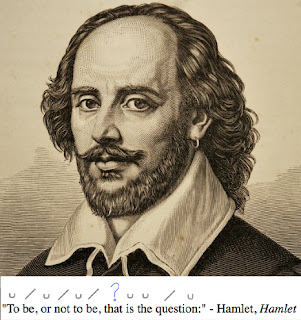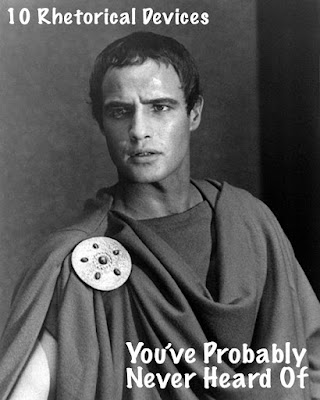Shakespeare and...Taylor Swift?
Let me begin with two facts that seem completely disparate: 1) Taylor Swift released her twelfth studio album, The Life of a Showgirl, on October 3 and 2) academic interest in Shakespeare is (reportedly) declining. But these two phenomena, irrelevant as they seem to one another at first glance, actually are connected in several ways. I believe that it is worth the time to explore these connections, especially for Shakespeare educators.
Is Taylor Swift the new Shakespeare? (I hate this question.)
This is the only question posed in the few articles that mention both Taylor Swift and Shakespeare. And, frankly, it's not an interesting or fruitful one. Attempting to compare the Bard's popularity with the singer's is a fruitless comparison––especially given the stark differences in the dissemination of media, as well as the attitude towards authorship, in Shakespeare's England and Swift's globalized world. The interesting conversation, I find, emerges as we investigate why these two writers come up in the same thought at all.
What can Swift tell us about Shakespeare?
The most obvious connection between Swift and Shakespeare––and the reason, I suspect, that people even think to speak of the two writers in the same breath––is that Swift has read Shakespeare and that she has written songs in conversation with his works. Swift's 2008 "Love Story" borrowed from the famed teenage romance in Romeo and Juliet and her 2025 "The Fate of Ophelia" draws on the story of the (mad)woman from Hamlet. In these two songs, Swift tells us a lot about reading Shakespeare in the modern day.
Like many American students, Swift likely read Romeo and Juliet in middle school. Perhaps she was even familiar with the storyline as a pop culture phenomenon before she even read the play, as many pre-teens and teenagers are. "Love Story" is not merely a reference to Romeo and Juliet, but rather a reflection on the experience of reading Shakespeare in an English class as a young person. (Another nod to the English curriculum is her reference to Nathaniel Hawthorne's novel The Scarlet Letter.) It is also a testament to what Shakespeare can do for American teenagers: provide a language with which to talk about romantic love, loyalty, and emotion against reason. Educators break their backs trying to prove that Shakespeare is relevant in the modern day, but the proof is right here. Swift chose to turn to that language, as a young woman in the 21st century, because it expresses that longing for loyal love in a way that she could relate to (and that the billions of people who sing that song, not to mention the scores of people who propose to their significant others while it plays, relate to as well).
Those who are appalled by the idea of mentioning Swift and Shakespeare in the same sentence will start by critiquing the connection this way: Swift's songs are not pure or accurate readings of Shakespeare. That's true. Yet it doesn't undermine the fact that Swift's references to Shakespeare can tell us something about Shakespeare's place in the modern day. Indeed her song "The Fate of Ophelia" is a prime example. For Swift, "The Fate of Ophelia" is to be a woman driven to madness and death by a man who does not reciprocate her love for him. By using this reference in a pop song, she inevitably brings Ophelia into the 21st century to shine a light on a culture that normalizes female desperation and male indifference. Spend a few minutes in one corner of TikTok and you'll inevitably find scores of women who post videos detailing "crazy" behavior and mourning over men who do not like them back, and even more women in the comments who attest that they can relate. The growing acceptable standard seems to be that women drive themselves crazy thinking about men who don't care.
That's what Taylor Swift the writer tells us about Shakespeare. What about Taylor Swift the phenomenon?
I'd like to expand the discussion from analysis of Shakespearean references in Swift's songs to a more cultural analysis of Taylor Swift as a global phenomenon. Few have equalled the cultural status that she has built and gained. She would appear at the top of any list of the most recognizable singers, songwriters, and celebrities. That's not unlike the Bard––who has been a global phenomenon ever since he was alive. Is there any reason common to both of these writers that helps explain the rise? I think there is. Each writer gives those who perform or give audience to their works the opportunity to leave behind the social obligations of being a normal person and instead adopt a heightened, dramatized version of themselves or a new identity altogether.
One might argue that you make this argument of all good theater (or even all good art). And I might concede that, but I'll say that I think Shakespeare and Swift are unique in how effectively they can do it. In the course of just a few scenes, one might transform from a naïve but sincere lover into a jealous monster (Othello). Or a cold-blooded murderer to a woman wracked with guilt (Macbeth). You can be overconfident like Don Adriano de Armado, pedantic like Holofernes, and sharp-witted like Rosaline (Love's Labor's Lost). And you can lean into each one of these characters 110%. Swift's songs provide the same kind of vivid, heightened playground for listeners to let loose. If grief is making you feel primal, you can pour out your emotions into "Dear John" or pound them into "Haunted." You adopt the persona of man-eater in "Blank Space" or come back from the dead to haunt those who did you wrong in "Who's Afraid of Little Old Me?" If you're feeling vengeful, she'll get on her "Vigilante S**t" with you. Both Shakespeare and Swift provide some respite from the social constraints of everyday life and ways to access that respite as an audience member and a performer.
How can Taylor Swift's musical output serve as a tool for teaching Shakespeare?
Perhaps the most promising aspect, for Shakespeare educators, of the culture Swift has built is her system of "easter eggs." Swift calls "easter eggs" hidden visual and textual references to past, present, and future songs and music videos. When presented with a new performance, music video, or piece of music, her fans will scour it looking for these hidden clues that help them understand the meaning of the work and its place in Swift's creative output. So Swift's "easter eggs" are what we, in the field of Shakespeare, call allusions or intertextual references.
So, when Swifties (as her fans call themselves) go hunting for the "easter eggs" in her works, they are actually engaging in literary and visual analysis. Educators who have worried that literary analysis is dying among the youth can exhale––Swifties are still doing it. And, even more than that, they are doing it for fun! They have discovered and embraced the pleasure of literary analysis.
Educators should absolutely take advantage of this when they introduce Shakespeare to their students. Shakespeare is dramatic and heightened and at many times unserious, like Swift. Like Swift, he expresses universal human emotions through specific storylines (what the youths call "relatable"). Part of the pleasure in reading his texts is unlocking them: reading closely and looking at references to other texts. And, of course, the other main way to get the full pleasure out of his texts is to perform them. (The Swiftian analog is, of course, to sing along.)
 |
| Parody of The Life of a Showgirl album cover (Taylor Swift, 2025). |



Comments
Post a Comment
All comments are moderated by the Green-Eyed Blogger to avoid spam. If you do not see your comment right away, do not worry; it is simply undergoing our routine moderation process.